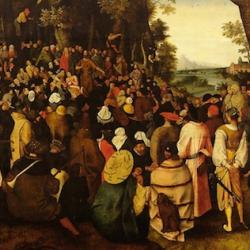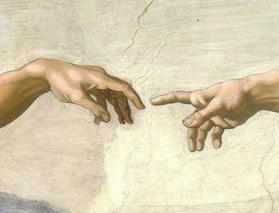In his commentary on Revelation 4, Victorinus spins off a fascinating allegory about the wings of the living creatures who surround the Lords’ throne. Four living creatures with six wings each: Victorinus does the obvious and multiplies. The resulting twenty-four wings represent the twenty-four books of the Old Testament, which happens to be the “same number as the elders on the tribunals.”
Why do we need the wings of the OT? “Just as an animal cannot fly unless it has wings, neither can the preaching of the New Testament acquire faith unless its testimony is seen to correspond to those foretold in the Old Testament, through which it rises from the earth and flies. For it is always the case that when something spoken in the past is later found to have happened, that creates an undoubting faith.”
Such as: God’s primordial promise to send a deliverer to crush Satan’s head, or His pledge to Abraham to bless Gentiles through His seed. Seeing promises fulfilled after many centuries of anguished waiting lifts us to the sky.
But the wings can’t work by themselves. They need to be attached to the animal. So, “unless that which the prophets foretold had been fulfilled in Christ, their preaching would be empty. And therefore the catholic church believes both that which was previously foretold and that which afterward was fulfilled, and rightly then flies and is lifted from the earth, as though a living animal.”
Heretics and Jews lack either the wings of the animal: “Heretics . . . who make no use of the prophetic testimony are as animals who do not fly, because the are of the earth. And likewise the Jews, who do not accept the preaching of the New Testament, are like wings that have no life, for they offer empty prophecies to people, not allowing the fulfilling deeds to correspond to the words of prophecy” (8).
Given the semi-Marcionite neglect of the Old Testament in modern theology, is it any wonder that it can’t get off the ground?















